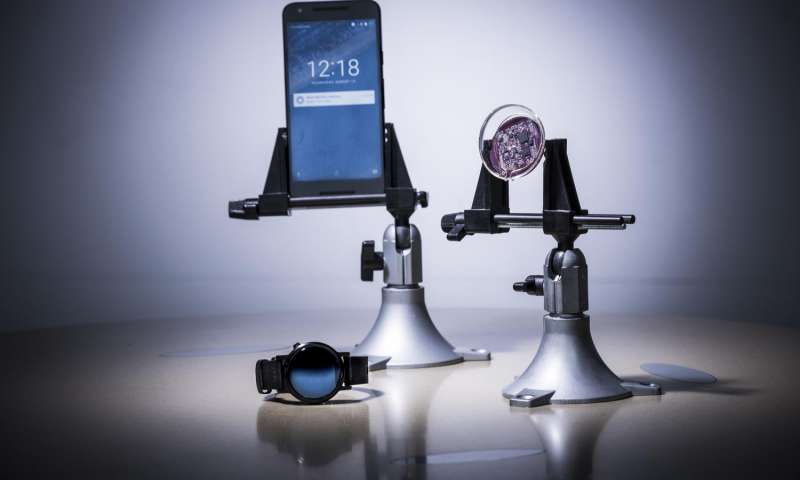
Engineers at the University of Washington (UW) have found a technique that allows brain implants, contact lenses, credit cards, and smaller wearable electronics to wirelessly communicate with smartphones, watches, and other devices. Called “interscatter communication,” the concept converts wireless transmission signals from one proprietary technology to another. An example would be a smart contact lens converting Bluetooth signals from a smartwatch into Wi-Fi transmissions that a smartphone can pick up.
Health benefits of the technology are boundless. “Wireless connectivity for implanted devices can transform how we manage chronic diseases,” said co-author Vikram Iyer, also an electrical engineering doctoral student at UW. “For example, a contact lens could monitor a diabetic’s blood sugar level in tears and send notifications to the phone when the blood sugar level goes down.”
Despite a promising theory, the smart contact lenses still require too much power demand to actually send data using conventional wireless transmissions at the moment. Without any data sending to mobile devices over Wi-Fi, the technology has also faced obstacles related to working with brain implants, which have the capability to treat Parkinson’s disease and stimulate organs. Limited by factors such as size and location within the body, the contact lenses will need to be studied further to enable Wi-Fi data exchanges.
This developing system doesn’t need any specialized equipment and only works with mobile devices that generate Wi-Fi signals using 10,000 times less energy than conventional methods. “Instead of generating Wi-Fi signals on your own, our technology creates Wi-Fi by using Bluetooth transmissions from nearby mobile devices such as smartwatches,” said co-author Vamsi Talla.
Interscatter communication transforms your typical Bluetooth, Wi-Fi, or ZigBee transmission into the research team’s “single tone” signal that is open for further interference. After backscattering the single tone signal, a contact lens can encode data into a standard Wi-Fi packet that a smartphone or tablet can read.

“Bluetooth devices randomize data transmissions using a process called scrambling,” said lead faculty Shyam Gollakota, assistant professor of computer science and engineering. “We figured out a way to reverse engineer this scrambling process to send out a single tone signal from Bluetooth-enabled devices such as smartphones and watches using a software app.”
However, the backscattering process can create an unwanted mirror image copy of the signal, using more bandwidth and obstructing networks on the mirror copy Wi-Fi channel. The research team created the “single sideband backscatter” technique to rid of the unfortunate aftermath. Single sideband backscatter can use as much bandwidth as possible but operate without disturbing other networks. “Interscatter can enable Wi-Fi for these implanted devices while consuming only tens or microwatts of power,” said co-author Joshua Smith, an associate professor of electrical engineering and computer science and engineering.
The technology can even apply to smart credit cards, as seen when the team experimented with credit card prototypes that connect with each other through reflective Bluetooth signals. A widespread use of these systems would allow for the smart cards to communicate with other cards and enable applications where users can split a bill just by tapping credit cards together.
“Providing the ability for these everyday objects like credit cards – in addition to implanted devices – to communicate with mobile devices can unleash the power of ubiquitous connectivity,” Gollakota said.
Source: Phys.org
Advertisement
Learn more about Electronic Products Magazine





